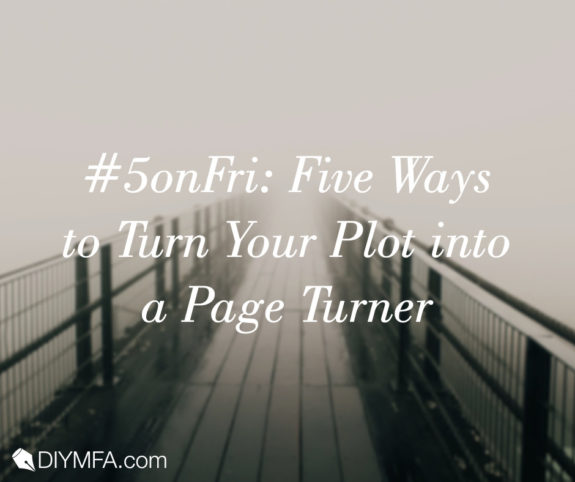What is it about a book that compels readers to stay up far later than they should on a weeknight? What makes a story a so-called page turner? Unputdownable. Why is it we have trouble getting to the end of one book, yet we fly through another?
The answers have a lot to do with harnessing and manipulating human curiosity: our need to know what happens next, how a difficult situation will “turn out.” Will the characters we love live to see another day, and, if so, how? Something in our brain cannot rest until we know all is right—or at least resolved—in the story world.
When I wrote my novel They Will Be Coming for Us, my intent was to keep the reader entertained every step of the way. This required several things: a sprinkling of humor, a dash or two of sex, and an overall sense of danger. I was elated when my first pre-publication reviewer wrote that my book “holds readers spellbound” (more on how to do this here).
A true page turner skips like a stone from one conflict to the next. In between, a bit of downtime occurs so both readers and characters can catch their breath. But quiet moments of reflection soon segue into motion. All will not be settled until the end of the book, when the loose ends tie together in an unexpected yet plausible finish.
Here are five ways to produce a page turner:
1. Conflict and Tension.
Fear. Emotional pain. Physical pain. Annoyance. Irritation. Confrontation. Threats of any of the above—or worse, of death. These are the things that create pressure, anxiety.
Humans may avoid tension in their everyday lives, but it plays an important role in keeping readers engaged in the story world. Life for characters should rarely be copacetic. Even if two friends have a civil conversation, tension should be present in some form. Their conversation strains under the weight of that thing they don’t want to talk about or are afraid to ask. Or, they are talking about the thing that causes stress, and their words are heated.
The unease of conflict must be present on the surface or below it in most every scene.
2. Make the reader worry.
How? Create suspense. Once again, it can be subtle or it can be obvious. An ominous atmosphere, such as a twister (metaphorical or otherwise) appears in the near distance. It might be a dangerous situation that requires careful skill in order to survive. A silent man lurking in the corner, a scary dream or other portentous activity. Something could easily go wrong—make sure your readers fear that it will.
Provide a hint of what could happen in a worst-case scenario. Then, later, when tensions are high, make the “bad” thing happen in some way, shape, or form.
3. Unpredictable Characters.
No one is all good or all bad, all nice or all mean, all prim and proper or rough around the edges. Some characters begin as the enemy and end up the savior. If you want to create twists and surprises, you need characters that can break out of whatever mold you’ve put them in, in a believable way.
You need round characters, three-dimensional characters. Characters who may be steadfast about something, but then you reveal a tiny crack in that steadfastness, a hint of what may come. And readers will read on to see whether it does.
For example, in a scene you present a young woman who loathes the expensive coffee shop her best friend often drags her to. She refuses to order there. Before the scene ends, however, you show her sniffing the air in a way that suggests she wouldn’t mind having a delicious coffee (the hint). At the end of the story, the best friend pops in for her daily caffeine fix and finds this anti-coffee drinker alone at a table, sipping happily.
Granted, this is a minor twist, but you can imagine using the technique in a bigger, more significant way. Real people aren’t consistent, and you can use that to your advantage when creating twists and other surprises.
4. Snappy Dialogue.
Nothing eases readers down the page faster than crisp dialogue. All dialogue should be lean, but the more intense the situation, the shorter, terser, and quicker it will be. Establish who is speaking at the get-go so you can lose the “he said/she said” and let the back-and-forth flow like a river down the page.
“Get your bag,” I say. “We’re leaving.”
“What? No.” Bella scowls.
“Laurent is coming. We can’t handle Laurent.”
“I promised I’d stay.”
“Text him from the car.”
“No.”
“Get. Your. Bag.”
Our eyes lock.
“He’ll kill us,” I say.
She runs to her room.
5. Short Sentences.
The same effect can be created with short sentences, which quicken the pace of the action.
Jessica hovers in the doorway. If only she could reach the light. The floor creaks behind her. She startles back. “Adam!” she cries.
One might argue that every plot has the potential to be a page turner in its own way, whether action packed or quietly intense. The hint of what’s to come can act as a powerful push forward. We want to know, Will it happen? If so, what will be the result? Will the main character prevent the disaster? If she doesn’t, what kind of tragedy will occur? Even if only a personal tragedy. The need to know is the key.
Kim Catanzarite has been a freelance writer and editor for almost three decades, and she teaches copyediting for Writer’s Digest University. Her debut sci-fi thriller, They Will Be Coming for Us, published June 1, 2021. You can subscribe to her self-publishing blog, and follow her on Twitter, Instagram, or Facebook.







